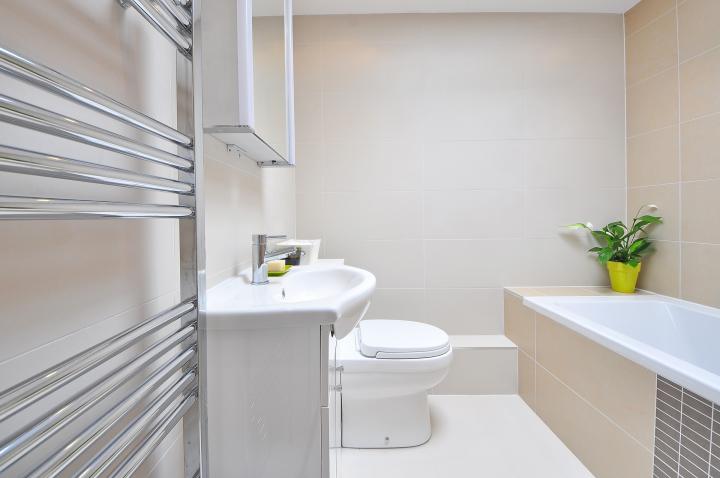STEP 1: Remove all the items that don't belong in your bathroom. Take out everything that doesn't belong, such as clothes, cups, and trash. Also, move out any little side tables or movable storage cabinets so that you can clean under them.
STEP 2: Pour some bleach or another disinfectant into the toilet bowl. Put the toilet brush inside the bowl, helping to sanitize the brush for cleaning. Let the cleaner sit for 10 to 15 minutes so that it can work.Make sure the door is open to ensure proper ventilation.For a green alternative, mix a tablespoon of baking powder into about a quart of 75/25 mix of white vinegar and water.
STEP 3: Dust from the top down. Clean cobwebs in the corners of the bathroom, and brush other dust and dirt directly onto the floor to sweep up later. A duster works great for this, but you can also use the broom.If you've got delicate wallpaper, place a soft, clean, dry rag over the bristles.
STEP 4: Apply any scrub powder to especially dirty areas. If you've got lime and build-up in the tub, sink, or around faucets, damp those areas slightly and sprinkle with scrubbing powder like Comet. Letting it sit for 10-15 minutes while you do other things will help to work loose the dirty patches and make your scrubbing go much more smoothly.For a greener option, sprinkle surfaces with baking soda and then spray them with vinegar. Let the mixture sit for 10 to 15 minutes and then wipe the vinegar and baking soda away with a damp cloth.
STEP 5: Wipe the walls, windows and/or ceiling. If you have mold on the ceiling start with spraying a water bleach/disinfectant solution on it and let it rest for a couple of minutes, do the same with the walls (if they are tiles) or use another cleaning product. With a sponge or a clean rag, scrub the tile surfaces you've sprayed. Rinse it carefully to avoid any stripes and dry it with a clean rag. It's a good idea to wear rubber gloves while you're scrubbing, to keep your hands from drying out if you're using harsh products.
STEP 6: Clean the shower. Spray cleaning product on the shower walls, and the shower head and let it rest for a couple of minutes. Spray cleansers made especially for getting rid of soap scum work very well on tubs that haven't been cleaned in a while.
STEP 7: Scrub the sink and counter area. Scrub all the soap scum and toothpaste off with a small amount of cleaner, rinsing your sponge thoroughly as you go along. Don't forget to clean your trashcan, toilet paper holder, tissue holder, toothbrush holder, doors, and other items in your bathroom. An old toothbrush or cotton swabs can be handy for getting the junk out from between the tap and handles.
STEP 8: Clean the outside of the toilet. Wipe all around the outside of the toilet, starting with the flush handle so as not to re-contaminate it. Use a cloth soaked in a disinfectant cleaner. Thoroughly wash and rinse all exterior surfaces of the toilet bowl, including the underside and flared base, the top and underside of the seat and lid, and the hinges and their mounting area with a cloth and detergent or similar cleaner.
STEP 9: Sweep and mop the floor. Start with the farthest point from the door. Sweep up all the dust and debris you've cleaned so far and let fall on the floor, then mop using hot soapy bleach water. Remember to rinse the floor with clean water to remove slippery soap residue. Be sure to get along the sides of your toilet bowl where it is anchored to the floor. This area is notoriously dirty. Don't forget to clean the base boards or base molds these places usually accumulates a lot of dust.
STEP 10: Use an old toothbrush to scrub small spaces. Find an unwanted old toothbrush and wash it thoroughly. Get rid of all excess toothpaste that may be on it. Apply a small amount of bleach or other counter-safe cleaning product to the toothbrush. Scrub away! The toothbrush helps to get in areas that are narrow or need very detailed scrubbing.

